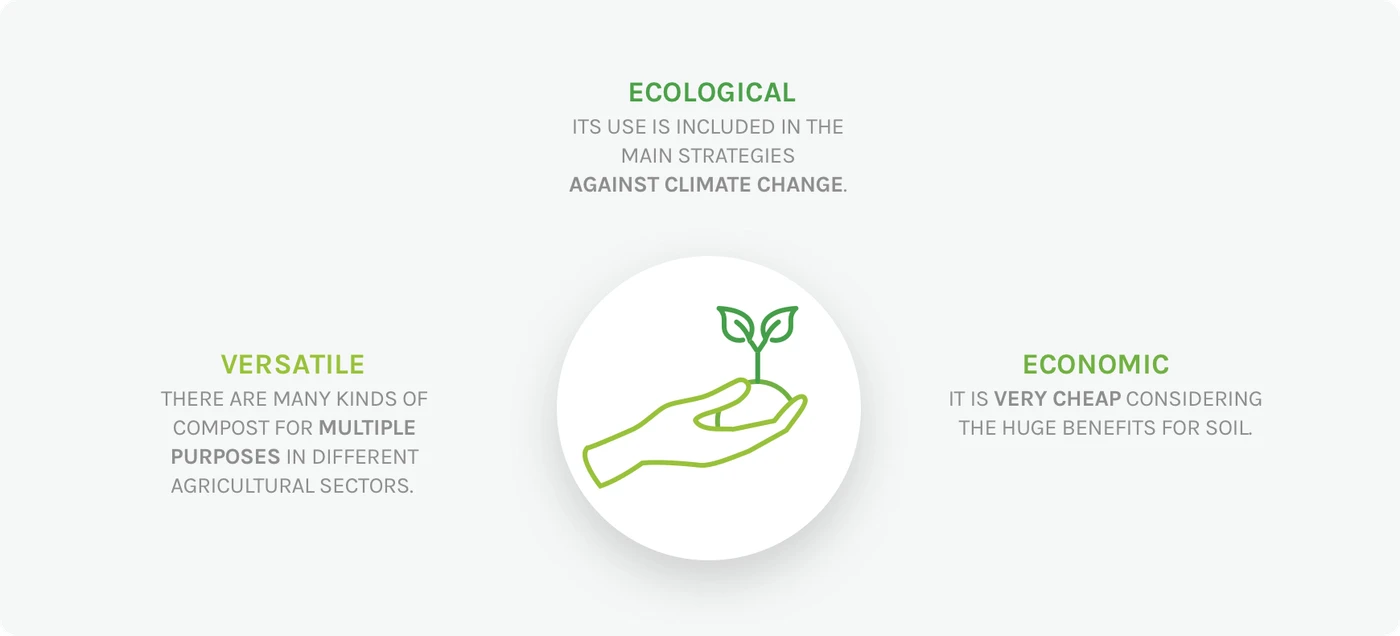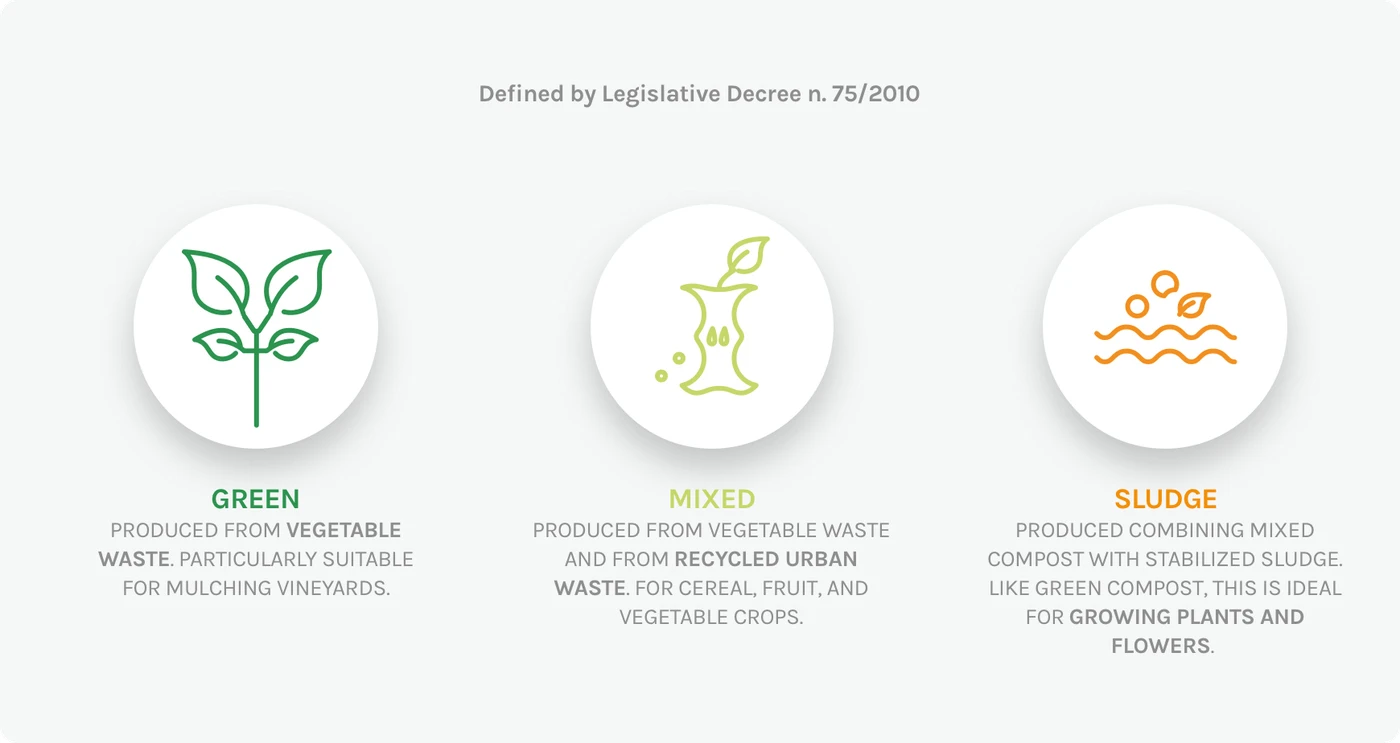
Acea for World Energy Saving Day
Understanding the benefits of composting and choosing organic fertilizers is the first step towards respecting the environment.
Talking about sustainable and organic farming also means talking about compost. What is compost?
Compost is the general definition of a fertilizer created transforming different types of organic waste.
Laws and regulations refer to it as fertilizing compost.
Its use is extremely effective in agriculture and for many farmers it is a better solution than chemical fertilizers.
Organic compost can restore soil fertility, prevent plant disease and desertification caused by periods of drought, increasing temperatures and the decline of organic content in soil.

Acea Ambiente produces various types of organic fertilizers and has long been collaborating closely with the Department for Innovation in Biological, Agro-Food and Forest Systems (DIBAF) at Tuscia University.
The quality of Acea Ambiente’s organic fertilizer is at the center of the collaboration between Acea Ambiente and the DIBAF at Tuscia University. The final objective is to provide detailed guidelines for the best use of the compost, by conducting research and experimental projects that start with the collection of data and studies on the ground.
“This partnership provides the opportunity to further explore the topic of microorganisms in the compost, the increase of microbial biodiversity in the soil as a consequence of it use, and divulge the results of the research and experimental projects through publications and during congresses” says Professor Gabriele Chilosi, one of the teachers at Tuscia University involved in the project.
“I am a fitopatologist and have been teaching at the Department for Innovation in Biological, Agro-Food and Forest Systems of Tuscia University since 1991. Over the years, I have focused especially on sustainable agriculture”.
“In plants, the synergy between compost and microorganisms creates a more harmonic development of the roots and greater resistance to diseases: its use helps to produce nutrients such as nitrogen and potassium. The soil becomes easier to work and increases its water retention capacity.”
Professor Gabriele Chilosi
A good indicator of its quality? High levels of humic substances, the precious components of compost.
“Feeding soil with organic fertilizer means increasing its biodiversity.” explains Chilosi.
The first step is listening to farmers who already use Acea Ambiente’s compost.
“By visiting farmers and filling in standardized questionnaires, we assess the soil’s production levels and, if needed, we offer advice from an agronomic point of view. This part of the job is essential because farmers often provide important insights on how to improve the use of organic fertilizer or when to apply it to a field and/or during what stage. New ideas are born from these exchanges and perspectives.” says Chilosi.
The next step involves experimenting to assess the fertilizing potential of the compost on different crops.
“We have started experimenting at the University’s farm and on some of the fields owned by Acea Ambiente. This work allows us to collect data on the quantity and quality produced, on the benefits of compost on plant heath and on how much the chemical, physical and biological fertility of the soil improves with the use of compost.”
Organic compost must ensure farmers the same quantity they would have produced if they had used chemical fertilizers, if not more.
“Statistics allow us to identify the best ways of applying compost, with the aim of providing guidelines on how to use Acea Ambiente’s organic fertilizer in different agri-food productions.”

On one hand, the collaboration between Acea and the University helps to improve the product during the composting stage as well as optimize its use; on the other, it contributes to divulging a culture that sees organic fertilizer and its benefits as a solution to many soil and crop problems.
“Cultures should all receive at least 20% of organic fertilizer, and compost is a great option to achieve this. Many farmers are extremely satisfied because compost ensures better crop quality, as it enriches the soil with organic substances.” says Chilosi.
Compost is not just beneficial to farming: because it is produced from waste, it also helps the circular economy process and leads to more sustainable production methods.
There is still a long way to go, but the objective is clear: obtaining the best today while preparing the ground for those who will come after us.
Discover the latest news and initiatives of the Acea Group

Acea for World Energy Saving Day

Visit the virtual museum about the history of the Acea Group

The channel for the commercial requests on land urbanisation

Acea turns the spotlight on the Rome Film Festival 2023

Acea is in the "Gold class" in the .trust research

Read more about our culture of inclusiveness